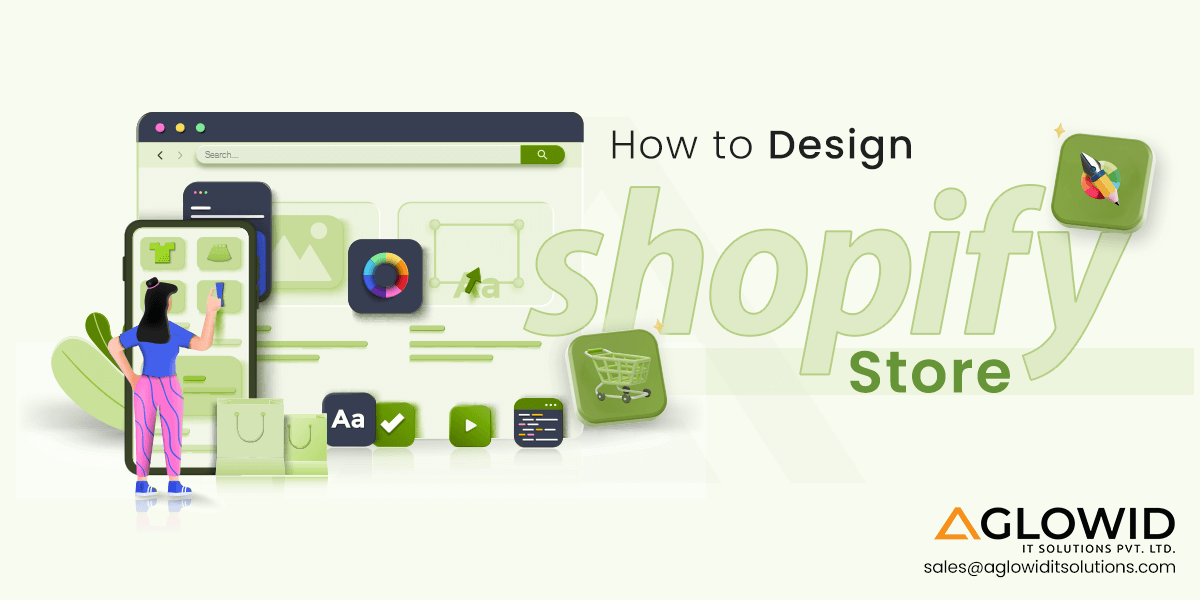Building a successful Shopify website is a critical component of any e-commerce business. Whether you're a small business owner or an established brand, setting up a well-optimized Shopify site is essential for attracting customers, boosting sales, and growing your online presence. Here's a comprehensive guide to help you create an effective Shopify website that meets the needs of your business and customers.
Step 1: Sign Up and Set Up Your Shopify Account
Before you can start building your Shopify website, you need to create an account on Shopify. The process is simple and includes a free trial period to help you explore the platform before committing.
- Sign up for an account: Go to the Shopify website, click on “Start free trial,” and provide basic information like your business name, email, and location.
- Choose your plan: Once you’ve completed the trial and are ready to commit, choose a plan that suits your business size and needs. Shopify offers several options ranging from Basic to Advanced, so carefully consider your business requirements.
- Set up store details: Fill out the necessary business information, configure your payment methods, and set your store currency and shipping options.
Step 2: Choose and Customize Your Theme
Your theme defines the look and feel of your website. Shopify offers a wide variety of free and paid themes, each designed to cater to different types of businesses.
- Select a theme that suits your brand: Consider your business niche and target audience when choosing a theme. Make sure it’s responsive (mobile-friendly) and aligns with your brand identity.
- Customize the theme: Shopify allows easy customization through its drag-and-drop editor. You can adjust fonts, colors, and layouts to match your brand’s visual style.
- Navigation and structure: Focus on a clean and intuitive layout. Your website should have clear navigation menus, a straightforward product display, and an easily accessible checkout process.
Step 3: Add Products and Organize Inventory
Once your theme is in place, it’s time to start adding products to your Shopify store. This step is essential for creating a professional and organized storefront.
- Add product details: For each product, include high-quality images, descriptions, prices, and inventory levels. It’s also helpful to include size, color, or other variations if applicable.
- Create collections: Group your products into categories such as “Men’s Apparel” or “Best Sellers.” Click here This will make it easier for customers to browse and find what they’re looking for.
- Set up variants: Shopify allows you to offer different sizes, colors, or other options for each product. For example, a t-shirt might come in different colors and sizes, and you can set each variant up with its own inventory tracking.
Step 4: Configure Payment Gateways and Taxes
Your Shopify store needs a secure and efficient payment system in place to handle transactions.
- Enable Shopify Payments or third-party gateways: Shopify Payments is the easiest option, as it integrates directly with your store. However, Shopify also supports various third-party payment gateways like PayPal, Stripe, and others.
- Set up taxes: Depending on your location and customer base, configure tax rates for different regions. Shopify allows you to automatically calculate taxes based on customer location.
- Testing the checkout process: Before launching, ensure that your checkout process is seamless. Test the entire journey, from selecting products to making payments, to make sure everything works smoothly.
Step 5: Optimize Your Website for SEO
Search engine optimization (SEO) is essential for driving organic traffic to your Shopify store. A well-optimized site ensures that your store ranks higher in search engine results, increasing visibility.
- Optimize product descriptions: Use relevant keywords in your product titles and descriptions. Research your target audience’s search habits to understand what terms they might use.
- Optimize images: Include descriptive alt-text for your images to improve both SEO and accessibility.
- Create a blog: Shopify allows you to create blog posts. This is an excellent opportunity to add content relevant to your products or niche, which can drive traffic and help with SEO.
- Improve page speed: A slow website can negatively affect your SEO and user experience. Click here Optimize images, minimize unnecessary apps, and use Shopify’s built-in features to improve loading times.
Step 6: Install Apps to Enhance Functionality
Shopify’s App Store offers a vast range of tools that can add useful features to your site, from marketing and customer support to inventory management.
- Email marketing apps: Use tools like Klaviyo or Omnisend to create email campaigns, automate communications, and drive sales through targeted offers.
- Customer reviews: Use apps like Yotpo or Judge.me to collect and display customer reviews on your product pages, building trust and social proof.
- Abandoned cart recovery: Shopify offers built-in abandoned cart recovery features, but additional apps like ReConvert can further optimize the process and boost sales.
Step 7: Test Your Shopify Store Thoroughly
Before launching your site, it’s important to conduct thorough testing to ensure everything works perfectly.
- Test on different devices and browsers: Make sure your site functions properly on mobile, tablet, and desktop devices, as well as across different browsers like Chrome and Safari.
- Test the checkout process: Run through the checkout flow as a customer to ensure the payment options, shipping details, and customer notifications are working smoothly.
- Test apps and integrations: Make sure all third-party apps are functioning as expected. Click here This includes email marketing integrations, review systems, and shipping apps.
Step 8: Launch and Promote Your Store
Once everything is set up and tested, it’s time to launch your Shopify store and begin promoting it.
- Announce the launch: Use social media, email marketing, and influencer collaborations to let people know your store is live.
- Leverage social media platforms: Platforms like Instagram, Facebook, and Pinterest are great for promoting products and driving traffic to your store.
- Consider paid advertising: Use Facebook Ads or Google Ads to target specific demographics and drive traffic to your site.
Step 9: Monitor Performance and Optimize
After launching your store, the work doesn't stop. Continuous monitoring and optimization are critical for sustained success.
- Track analytics: Use Shopify’s built-in analytics or integrate Google Analytics to track your website’s performance. Look at metrics like traffic sources, conversion rates, and sales data.
- Monitor customer feedback: Keep an eye on customer reviews, feedback, and social media comments to identify areas for improvement.
- Refine your strategy: Based on your performance data, make adjustments to your marketing campaigns, product offerings, or website design to improve conversions and customer satisfaction.


